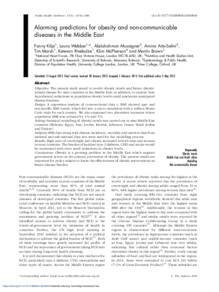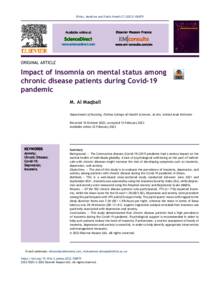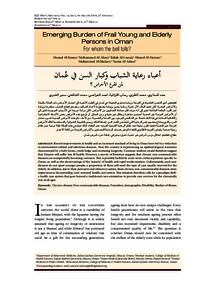Document
Alarming predictions for obesity and non-communicable diseases in the Middle East.
Identifier
DOI: 10.1017/S1368980013000840
Contributors
Webber, Laura., Author
Musaigner, Abdulrahman., Author
Aitsi-Selmi, Amina., Author
Marsh, Tim., Author
Rtveladze, Ketevan., Author
Mcpherson, Klim., Author
Brown, Martin., Author
Publisher
Cambridge University Press.
Gregorian
2014-05
Language
English
Subject
English abstract
Objective The present study aimed to model obesity trends and future obesity-related disease for nine countries in the Middle East; in addition, to explore how hypothetical reductions in population obesity levels could ameliorate anticipated disease burdens. Design A regression analysis of cross-sectional data v. BMI showed age- and sex-specific BMI trends, which fed into a micro simulation with a million Monte Carlo trials for each country. We also examined two alternative scenarios where population BMI was reduced by 1 % and 5 %. Setting Statistical modelling of obesity trends was carried out in nine Middle East countries (Bahrain, Egypt, Iran, Jordan, Kuwait, Lebanon, Oman, Saudi Arabia and Turkey). Subjects BMI data along with disease incidence, mortality and survival data from national and sub-national data sets were used for the modelling process. Results High rates of overweight and obesity increased in both men and women in most countries. The burden of incident type 2 diabetes, CHD and stroke would be moderated with even small reductions in obesity levels. Conclusions Obesity is a growing problem in the Middle East which requires government action on the primary prevention of obesity. The present results are important for policy makers to know the effectiveness of obesity interventions on future disease burden.
Member of
ISSN
1368-9800
Resource URL
Category
Journal articles




